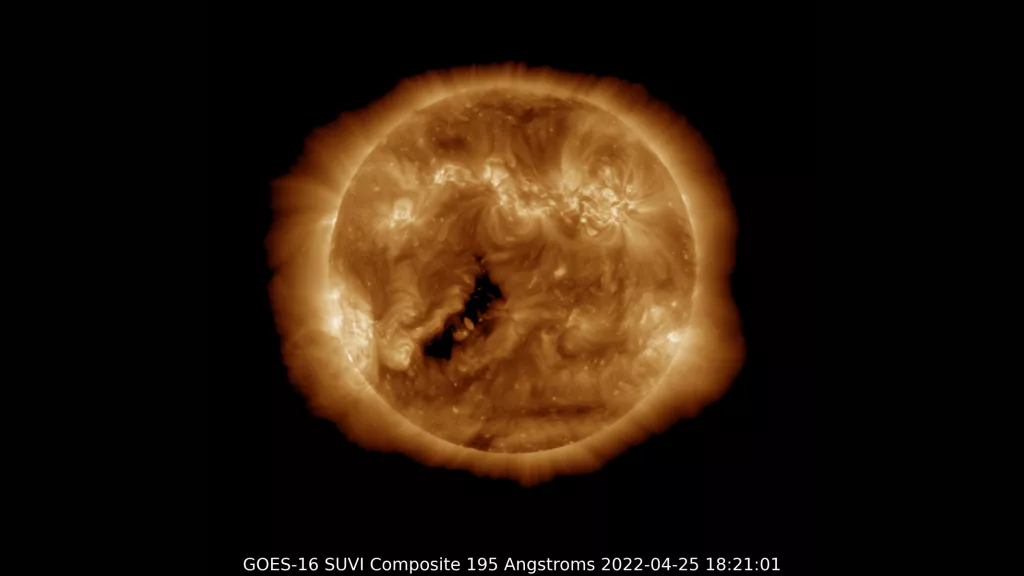Sunspot sends off double flare, as solar activity ramps up
The restless sunspot is disrupting radio communications.

A restless sunspot threw off a double solar flare Monday (April 25), triggering some radio blackouts over Asia and Australia.
The sunspot AR2993 erupted with two M1 flares in quick succession, according to Spaceweather.com. Solar flares are eruptions of electromagnetic radiation; M-class flares are moderate-sized flares that can disrupt some radio frequencies and sometimes expose astronauts in space to higher-than-usual levels of radiation.
Sunspot AR2993 is "middling in size," solar physicist Dean Pesnell of NASA's Goddard Space Flight Center told Live Science in an email last week, but it is hundreds of millions of square miles in area – Earth would sit in the active region as comfortably as an egg in a nest. Sunspots are regions of the sun where the magnetic field is temporarily much stronger than the surrounding areas. These magnetic forces block the flow of hot gas from the sun's interior, making sunspots much cooler than their surroundings. Solar flares happen when the magnetic field lines near sunspots reorganize explosively. Sometimes, these eruptions of radiation also trigger coronal mass ejections (CMEs), which are explosions of the sun's plasma.
Related: Strange new type of solar wave defies physics
It's been a busy few weeks for the sun, with multiple active sunspots sending off flares. Solar activity occurs in regular 11-year cycles, which have been recorded since 1775. The sun is currently in Solar Cycle 25 and is in a period of ramping up its activity. Solar Cycle 25 is expected to peak in late 2024 or early 2025, meaning that the frequency of sunspots, solar flares and CMEs are expected to increase.
Some of those flares and CMEs are likely to be more impactful than the middling double-M1s the sun just threw out. Just last week, on April 19 and 20, a different sunspot (AR2992) erupted with a powerful X-class flare. X-flares are 10 times as powerful as M-class flares and can cause radiation storms that disrupt satellites, radio communications and even the power grid on Earth. Luckily, Earth did not bear the full brunt of last week's X-flare, as the sunspot was not facing directly toward the planet.
Large solar flares and CMEs can also trigger gorgeous auroras farther south from Earth's poles than is typical. Solar particles from the sun interact with the magnetic fields surrounding Earth, exciting air molecules in the upper atmosphere and causing them to give off photons of light. The result? Shifting curtains of light in greens, blues and pinks.
As the sun continues its unsettled activities, aurora forecasts can be found at the National Oceanic and Atmospheric Administration (NOAA) Space Weather Prediction Center.
Get the Space.com Newsletter
Breaking space news, the latest updates on rocket launches, skywatching events and more!
Originally published on Live Science.
Join our Space Forums to keep talking space on the latest missions, night sky and more! And if you have a news tip, correction or comment, let us know at: community@space.com.

Stephanie Pappas is a contributing writer for Space.com sister site Live Science, covering topics ranging from geoscience to archaeology to the human brain and behavior. She was previously a senior writer for Live Science but is now a freelancer based in Denver, Colorado, and regularly contributes to Scientific American and The Monitor, the monthly magazine of the American Psychological Association. Stephanie received a bachelor's degree in psychology from the University of South Carolina and a graduate certificate in science communication from the University of California, Santa Cruz.










